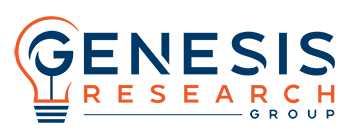We sat down with Senior Director Allie Sosinsky and Director Katherine Donegan of Genesis Research Group’s Pharmacoepidemiology & Safety team, to explore how their team helps pharma, biotech, and medical device companies unlock critical insights from real-world evidence (RWE) databases.
As regulatory agencies worldwide increasingly utilize real-world data for drug approvals and post-market surveillance, the demand for robust pharmacoepidemiology studies continues to rise, making evidence generation both more important and complex in ensuring patient access to safe and effective medicines. With extensive experience in academia, regulatory affairs, and clinical research, Allie and Katherine lead a team dedicated to delivering high-quality evidence that drives better patient outcomes.
How does your work help improve access or outcomes for patients?
 Allie: Within the pharmacoepidemiology and safety team, we’re working to plan and conduct real-world data studies that help inform robust safety and effectiveness evidence, ultimately used to inform regulatory and clinical decision-making. We aim to ensure that effective therapies can reach the appropriate patient populations by addressing regulatory requirements and safety concerns in a timely manner.
Allie: Within the pharmacoepidemiology and safety team, we’re working to plan and conduct real-world data studies that help inform robust safety and effectiveness evidence, ultimately used to inform regulatory and clinical decision-making. We aim to ensure that effective therapies can reach the appropriate patient populations by addressing regulatory requirements and safety concerns in a timely manner.
 Katherine: My work has been primarily within post-authorization settings. It’s important to remember that all medicines have side effects. For a medicine to be authorized, clinical trials must be conducted. While these trials can provide evidence of the benefits and risks of a medicine, they’re often limited in terms of the number of patients, follow-up, and diversity of the cohort treated, meaning that both rarer risks may go undetected, and the safety profile of a medicine still needs to be fully characterized. Therefore, continuing research into the safety of drugs after authorization is vital to ensure that the benefits continue to outweigh the risks. The population of patients treated with a medicine in the real world can be vastly different from that of a trial population, often having more complex medical histories. Proactively identifying rarer risks and differences in the safety profile across different patients can allow measures to be taken to ensure patient safety. Real-world data has been increasingly used to generate evidence of efficacy and support earlier access to medicines. Our work is primarily aimed at leveraging the insights gained from extensive use of real-world data in post-authorization phases to ensure that the evidence base for authorizations remains robust, capitalizing on the advantages of using real-world data.
Katherine: My work has been primarily within post-authorization settings. It’s important to remember that all medicines have side effects. For a medicine to be authorized, clinical trials must be conducted. While these trials can provide evidence of the benefits and risks of a medicine, they’re often limited in terms of the number of patients, follow-up, and diversity of the cohort treated, meaning that both rarer risks may go undetected, and the safety profile of a medicine still needs to be fully characterized. Therefore, continuing research into the safety of drugs after authorization is vital to ensure that the benefits continue to outweigh the risks. The population of patients treated with a medicine in the real world can be vastly different from that of a trial population, often having more complex medical histories. Proactively identifying rarer risks and differences in the safety profile across different patients can allow measures to be taken to ensure patient safety. Real-world data has been increasingly used to generate evidence of efficacy and support earlier access to medicines. Our work is primarily aimed at leveraging the insights gained from extensive use of real-world data in post-authorization phases to ensure that the evidence base for authorizations remains robust, capitalizing on the advantages of using real-world data.
What’s the most significant trend or challenge impacting your clients right now?
 Katherine: Two of the most significant challenges impacting the development of real-world evidence is data quality and regulatory acceptance of real-world evidence. Good engagement with data holders is required to access data and fully understand its characteristics. Guidance from regulators is continuing to evolve, and regulators have repeatedly emphasized the importance of data quality when using real-world data. This includes issues such as the size and relevance of the patient population, the methods for capturing covariate and exposure information, the timing and frequency of reporting outcomes, and what data checking has been conducted. It’s essential to understand how and why data are recorded in an individual data source to address these questions. Early consideration of the potential use of real-world data can help mitigate some of these issues.
Katherine: Two of the most significant challenges impacting the development of real-world evidence is data quality and regulatory acceptance of real-world evidence. Good engagement with data holders is required to access data and fully understand its characteristics. Guidance from regulators is continuing to evolve, and regulators have repeatedly emphasized the importance of data quality when using real-world data. This includes issues such as the size and relevance of the patient population, the methods for capturing covariate and exposure information, the timing and frequency of reporting outcomes, and what data checking has been conducted. It’s essential to understand how and why data are recorded in an individual data source to address these questions. Early consideration of the potential use of real-world data can help mitigate some of these issues.
 Allie: I’ll add that we need to keep in mind that there is also a complex environment that’s evolving and changing constantly with advancements in regulatory science and new guidelines emerging from various agencies and prominent groups. In addition, there’s an increasing adoption of AI and technology. There’s a lot of eagerness and anticipation to see if that can help improve the issues of data quality and fragmentation, and perhaps to leverage more of the unstructured data that is available or to bring the best of different data sources together.
Allie: I’ll add that we need to keep in mind that there is also a complex environment that’s evolving and changing constantly with advancements in regulatory science and new guidelines emerging from various agencies and prominent groups. In addition, there’s an increasing adoption of AI and technology. There’s a lot of eagerness and anticipation to see if that can help improve the issues of data quality and fragmentation, and perhaps to leverage more of the unstructured data that is available or to bring the best of different data sources together.
How does Genesis Research Group’s approach help clients navigate today’s healthcare landscape and prepare themselves for the future?
 Allie: At Genesis, our working model facilitates bringing together cross-disciplinary expertise. With our clients, the individuals who are pulled in from Genesis work closely cross-functionally. This allows us to make recommendations by integrating different perspectives. Within pharmacoepidemiology and safety, we collaborate closely with our colleagues in biostatistics and analytics, who are hands-on with the data and HEOR (Health Economics and Outcomes Research) strategy, so that we can provide coordinated plans of action for our clients. Another thing that makes Genesis special is that we work closely with some of the same clients over a long period of time. That allows us to get to know them and their colleagues, as well as the context and environment in which they work. This enables us to be better positioned to anticipate their needs. You build trust in a longer-term relationship like that, and you can communicate more candidly, learning to work together as one cohesive team.
Allie: At Genesis, our working model facilitates bringing together cross-disciplinary expertise. With our clients, the individuals who are pulled in from Genesis work closely cross-functionally. This allows us to make recommendations by integrating different perspectives. Within pharmacoepidemiology and safety, we collaborate closely with our colleagues in biostatistics and analytics, who are hands-on with the data and HEOR (Health Economics and Outcomes Research) strategy, so that we can provide coordinated plans of action for our clients. Another thing that makes Genesis special is that we work closely with some of the same clients over a long period of time. That allows us to get to know them and their colleagues, as well as the context and environment in which they work. This enables us to be better positioned to anticipate their needs. You build trust in a longer-term relationship like that, and you can communicate more candidly, learning to work together as one cohesive team.
 Katherine: Being a data-agnostic organization with experience across a broad range of data sources and therapeutic areas means we’re well-placed to support clients in choosing a data source that is appropriate for their questions and advise them on its potential use for different purposes and through various study designs. With experience engaging with multiple national and international regulators, we can help clients navigate what can be seemingly complex regulatory processes in a streamlined and efficient way.
Katherine: Being a data-agnostic organization with experience across a broad range of data sources and therapeutic areas means we’re well-placed to support clients in choosing a data source that is appropriate for their questions and advise them on its potential use for different purposes and through various study designs. With experience engaging with multiple national and international regulators, we can help clients navigate what can be seemingly complex regulatory processes in a streamlined and efficient way.
What aspect of your work brings you the most satisfaction?
 Allie: Having started my career in clinical research and having worked hands on with patients that were contributing to developing new data sources because they were invested in seeing the outcomes of that research, it’s really about the patients at the end of the day for me–the feeling that the work that we’re doing has the ability to directly contribute to improving the safety and effectiveness of available treatment options is gratifying to me. I’ve worked with patient populations in the past where there was limited information about the risks and benefits, which can help inform high-stakes treatment decisions. Therefore, feeling like we’re helping to address some of those gaps and solve these kinds of challenging clinical problems is rewarding.
Allie: Having started my career in clinical research and having worked hands on with patients that were contributing to developing new data sources because they were invested in seeing the outcomes of that research, it’s really about the patients at the end of the day for me–the feeling that the work that we’re doing has the ability to directly contribute to improving the safety and effectiveness of available treatment options is gratifying to me. I’ve worked with patient populations in the past where there was limited information about the risks and benefits, which can help inform high-stakes treatment decisions. Therefore, feeling like we’re helping to address some of those gaps and solve these kinds of challenging clinical problems is rewarding.
 Katherine: The thing that brings me the most satisfaction working in this area is seeing the evidence that we’re generating being used. During my time at the Medicines and Healthcare products Regulatory Agency (MHRA), I was fortunate enough to meet with several patient campaign groups and see how we could use real-world data to make decisions that meaningfully impacted patient care and addressed the concerns they raised. This was particularly rewarding. More generally, ensuring that relevant and high-quality evidence is available to prescribers and patients to support their decisions, whether in the hospital, doctor’s office, or pharmacy, is my primary motivator and gives me the most satisfaction.
Katherine: The thing that brings me the most satisfaction working in this area is seeing the evidence that we’re generating being used. During my time at the Medicines and Healthcare products Regulatory Agency (MHRA), I was fortunate enough to meet with several patient campaign groups and see how we could use real-world data to make decisions that meaningfully impacted patient care and addressed the concerns they raised. This was particularly rewarding. More generally, ensuring that relevant and high-quality evidence is available to prescribers and patients to support their decisions, whether in the hospital, doctor’s office, or pharmacy, is my primary motivator and gives me the most satisfaction.
What’s one belief about drug safety that most people get wrong?
 Allie: I think one of the common misconceptions that I hear is that once a drug is approved, whether it’s by the Food and Drug Administration (FDA) or another regulatory agency, is that its safety profile is fully characterized using clinical trials. Greater recognition is needed that longer-term monitoring is essential, and it should be built into the process. We also need to improve representation in real-world data studies and Phase 4 monitoring efforts, since not all patient populations that will use a product once it reaches market are well represented in clinical trials. This approach can go a long way towards helping us ensure that we can adequately identify rare or longer-term adverse events and monitor how different groups may respond to the drug. This refined data allows us to better assess the accurate benefit-risk profile for specific patient groups.” There may be differences in the adverse events experienced by certain patients and varying levels of benefit from the drug, considering the benefit-risk profile.
Allie: I think one of the common misconceptions that I hear is that once a drug is approved, whether it’s by the Food and Drug Administration (FDA) or another regulatory agency, is that its safety profile is fully characterized using clinical trials. Greater recognition is needed that longer-term monitoring is essential, and it should be built into the process. We also need to improve representation in real-world data studies and Phase 4 monitoring efforts, since not all patient populations that will use a product once it reaches market are well represented in clinical trials. This approach can go a long way towards helping us ensure that we can adequately identify rare or longer-term adverse events and monitor how different groups may respond to the drug. This refined data allows us to better assess the accurate benefit-risk profile for specific patient groups.” There may be differences in the adverse events experienced by certain patients and varying levels of benefit from the drug, considering the benefit-risk profile.
 Katherine: In addition, one thing that people who work in the industry often find quite surprising about drug safety is the level of evidence on which major decisions are taken in the post-authorization setting. We’ve seen over the years that individual reports of side effects remain the primary data source for informing major decisions made regarding medicines after they’ve been licensed. And while there’s a trend towards the greater availability of comparative study data, there’s still substantial work to be done to ensure that evidence generation is sufficiently proactive, such that it can support timely and more tailored and robust regulatory decisions based on a stronger evidence base.
Katherine: In addition, one thing that people who work in the industry often find quite surprising about drug safety is the level of evidence on which major decisions are taken in the post-authorization setting. We’ve seen over the years that individual reports of side effects remain the primary data source for informing major decisions made regarding medicines after they’ve been licensed. And while there’s a trend towards the greater availability of comparative study data, there’s still substantial work to be done to ensure that evidence generation is sufficiently proactive, such that it can support timely and more tailored and robust regulatory decisions based on a stronger evidence base.
How has working with drug safety data changed the way you think about your own healthcare decisions or medications?
 Allie: There are three main impacts. The first consideration is thinking about who I’m seeking care from and really seeking clinicians who are making evidence-based recommendations and actively committed to staying current on any advances in the field, which is definitely a challenge given the rapid pace of new research that’s emerging. Second, I want to partner with clinicians who will keep me informed and bring me into the conversation on the calculus of risk and benefit for any healthcare or treatment decisions. And then the third is thinking about increased appreciation for reporting any side effects of medications, participating in research where there are opportunities to do so, and contributing to a growing knowledge base that can, in turn, be used to support better healthcare decision-making for others in the future.
Allie: There are three main impacts. The first consideration is thinking about who I’m seeking care from and really seeking clinicians who are making evidence-based recommendations and actively committed to staying current on any advances in the field, which is definitely a challenge given the rapid pace of new research that’s emerging. Second, I want to partner with clinicians who will keep me informed and bring me into the conversation on the calculus of risk and benefit for any healthcare or treatment decisions. And then the third is thinking about increased appreciation for reporting any side effects of medications, participating in research where there are opportunities to do so, and contributing to a growing knowledge base that can, in turn, be used to support better healthcare decision-making for others in the future.
How has working with patients and regulators and seeing their decision-making changed the way that you personally think about drug safety data?
 Katherine: Seeing the issues that are important to patients and the factors that they take into account when deciding what drugs to take and what medicines to use for them and their children, and working with prescribers and clinicians to understand how they make decisions around the medication they’re going to provide has highlighted to me the importance of drug safety data that’s relevant to the individual. Everyone, when they’re making their own healthcare decisions, either for themselves or a dependent or on behalf of a patient, really wants to know what the risks are and what the benefits are that they can hope to see given their particular situation, and not what you might expect to see in a broader population. What is critical, and what we need to push more going forward, is to ensure that the evidence we’re producing can be personalized to the individual, so they can use it optimally to inform their decisions.
Katherine: Seeing the issues that are important to patients and the factors that they take into account when deciding what drugs to take and what medicines to use for them and their children, and working with prescribers and clinicians to understand how they make decisions around the medication they’re going to provide has highlighted to me the importance of drug safety data that’s relevant to the individual. Everyone, when they’re making their own healthcare decisions, either for themselves or a dependent or on behalf of a patient, really wants to know what the risks are and what the benefits are that they can hope to see given their particular situation, and not what you might expect to see in a broader population. What is critical, and what we need to push more going forward, is to ensure that the evidence we’re producing can be personalized to the individual, so they can use it optimally to inform their decisions.
What advice would you give to someone interested in a career in RWE / drug safety?
 Allie: I think something helpful to consider at the outset is that there are so many different ways that you can contribute to the field, whether it’s as an epidemiologist, a statistician, or more from a data science perspective, and thinking about which of those is going to be the best fit for you. If you’re leaning towards epidemiology or pharmacoepidemiology, consider attending a conference like ISPE, where you can network, present your work, and receive feedback. This will help you understand where the current advances are happening in the scientific community. That can be really valuable. Another thing I’d like to mention is that, regardless of which sector or way of contributing appeals to you, it’s been beneficial to always keep in mind the potential impact on patients. And that every patient and every data set we’re examining is a unique individual. It brings more meaning and purpose to the work that we do.
Allie: I think something helpful to consider at the outset is that there are so many different ways that you can contribute to the field, whether it’s as an epidemiologist, a statistician, or more from a data science perspective, and thinking about which of those is going to be the best fit for you. If you’re leaning towards epidemiology or pharmacoepidemiology, consider attending a conference like ISPE, where you can network, present your work, and receive feedback. This will help you understand where the current advances are happening in the scientific community. That can be really valuable. Another thing I’d like to mention is that, regardless of which sector or way of contributing appeals to you, it’s been beneficial to always keep in mind the potential impact on patients. And that every patient and every data set we’re examining is a unique individual. It brings more meaning and purpose to the work that we do.




